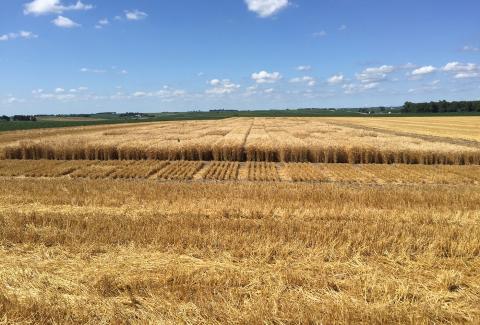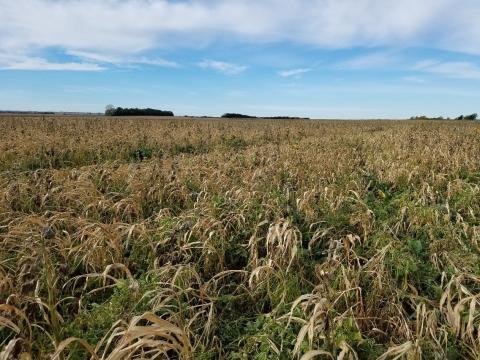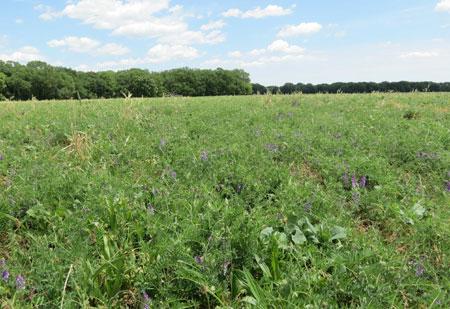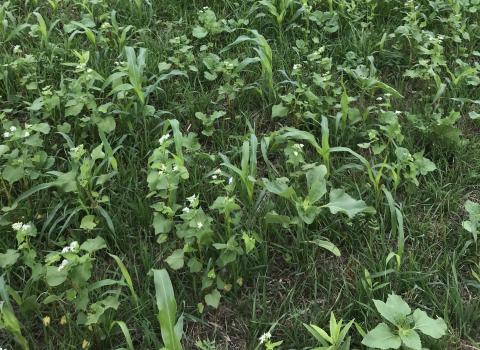
Cover Crop Field Day Sept. 13 at UNL Rogers Memorial Farm
August 30, 2019
This tour will feature cover crop cocktails that serve specific functions as well as cover crops growing in wheat stubble, cover crop recovery after simulated grazing, and row crops growing in the residue from cover crops.
Cover Crop Considerations Following Late-Season Hail
August 29, 2019
Late-season hail has impacted fields across Nebraska. Growers may want to consider the value of cover crops for weed management, excess nitrogen uptake, and forage options.
A Review of the 2018-19 Eastern Nebraska Winter Wheat Growing Season
August 15, 2019
Nebraska Extension educators review the wheat production season in eastern Nebraska and factors affecting it, from a rough start with cool, wet conditions to a good finish.
Aug. 1 Deadline for MFP Aid for Planting Cover Crops
July 26, 2019
Producers affected by natural disasters who filed prevented planting claims may be eligible for a $15 per acre payment for planting MFP-eligible cover crops by Aug. 1, 2019. This can be used in conjunction with the NRCS cost-share program.
New SARE Resource Examines Economics of Cover Crops in Row Crops
July 16, 2019
A new publication from USDA Sustainable Agriculture and Research Education (SARE), Cover Crop Economics: Opportunities to Improve Your Bottom Line in Row Crops, looks at the economics of cover crops in corn and soybean rotations to help farmers answer that big question: When do cover crops pay?
Farmers Find Solutions Through Nebraska Soil Health Initiative
July 11, 2019
How can we manage cropland to improve soil health? To test and encourage adoption of soil health practices, the Soil Health Demonstration Initiative was launched as a collaborative effort of growers, UNL and NRCS. Now a network of farm research sites is providing valuable information from in-field studies.
Cover Crop Use and Implications for Cropland Lease Arrangements in 2019
July 8, 2019
Cover crops were planted on almost 750,000 acres in Nebraska in 2017, the last year of the USDA Ag Census. A recent Cornhusker Economics reports cover crop acreage by county as well as how to consider their short-term costs and potential long-term benefits when negotiating crop land leases.
Deadline Extended to Apply for Funding to Plant Cover Crops on Flooded Cropland Acres
June 28, 2019
NRCS announced today that it is offering a later EQIP sign-up for farmers in Nebraska who could not plant their crops because of flooded or wet fields. The deadline to apply is July 19, 2019.




